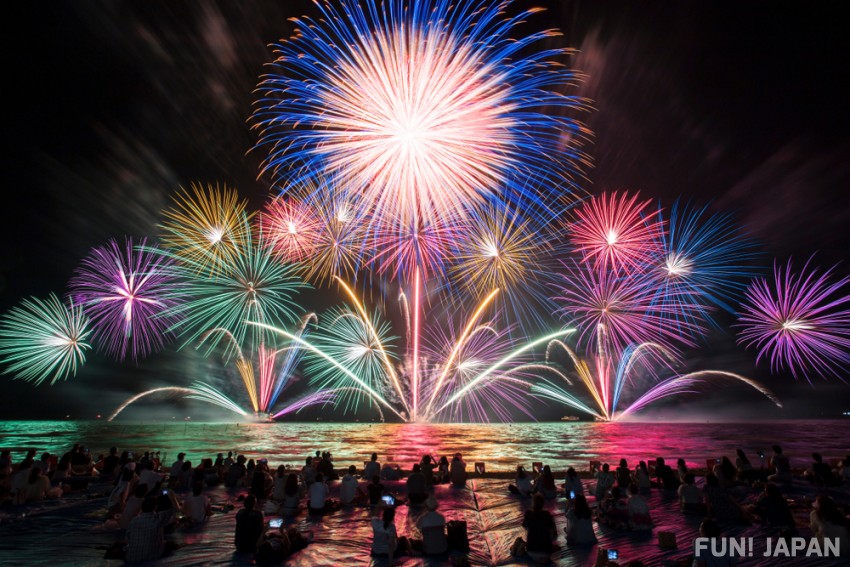
What are Hanabi?
Hanabi means fire-flowers, and reflects the beauty of fireworks as a much-loved part of Japanese culture. Popular since the Edo-period, they have come to symbolize summer in Japan, with countless fireworks festivals drawing crowds of thousands. Coming in a variety of forms, they can be crafted into waterfalls or smiling faces, with many competitions held to display the latest designs.
What is Japan’s history with fireworks?

There are many different theories as to the origin of fireworks in Japan, ranging from their use to ward off evil spirits to their presentation as a gift to Tokugawa Ieyasu from a British King and Chinese merchant. It is known that the first public fireworks display was held on the Sumida River in 1733 in memory of those who had died of starvation due to the previous year’s crop failure, plague and cholera outbreak. This became an annual event and is now one of the most popular in Japan. Hanabi have since become a feature of summer in Japan and are associated with festivals, street food and celebration.
Another reason fireworks are so closely connected to summer in Japanese culture is their role in the August festival of Obon. During this time, spirits return to visit the land and fireworks are used to welcome them, as well as sending them back to the spiritual world, as a form of okuribi.
Hanabi Taikai: Japanese Firework Competitions
One of the most important aspects of Japanese firework displays is the competition element. Known as ‘hanabi taikai’, firework competitions pit the latest designs and combinations against each other. Leading pyrotechnicians from across the country and abroad gather for these displays, meaning Japanese festivals have some of the best displays in the world. This tradition began when Japan’s original fireworks producer Kagiya (opened in 1659) was joined after 150 years by new guild Tamaya who began producing fireworks in 1808. The two would battle for the title of best fireworks with audiences calling out their preferred name during the displays. While there are now many more designers involved, the love of competition has remained.
Different Kinds of Japanese Fireworks
As leaders in the field of firework design, Japan has a wide variety of fireworks that can be seen at festivals and private displays. Events will carefully list the different styles and provide detailed guides of who designed them, with announcements between displays at the events. Popular designs include Starmine (スターマイン) which is a carefully timed combination of hundreds of fireworks and Niagara (ナイアガラ) which is a waterfall-like design that inspired its name - but there are four main groups of firework in Japan, with many subcategories in each.
Warimono (割物)
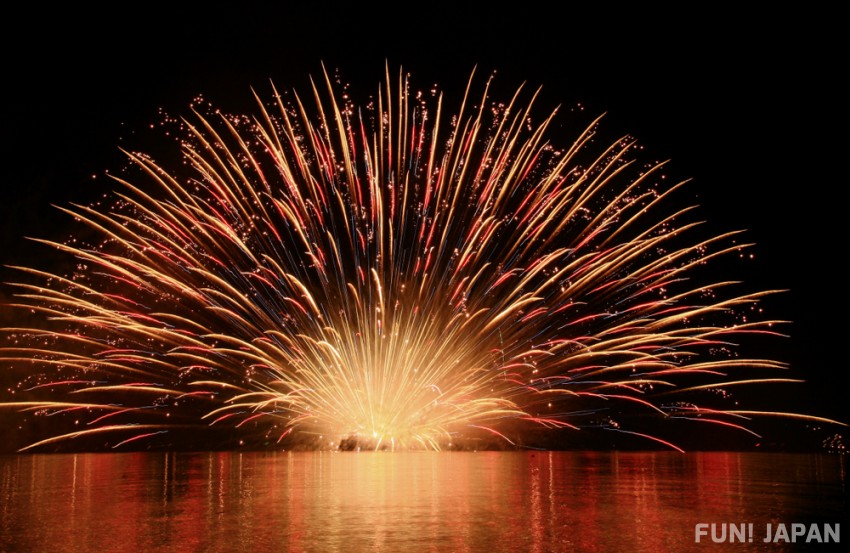
These are the quintessential fireworks we know and love - blooming into spherical bursts across the night sky. Whether blending colors or keeping it simple, they are popular across the world. The most common varieties are the kiku (chrysanthemum) design which has a central burst of color within a wider sphere and long tails, or the botan (peony) which has shorter tails.
Hanwarimono (半割物)
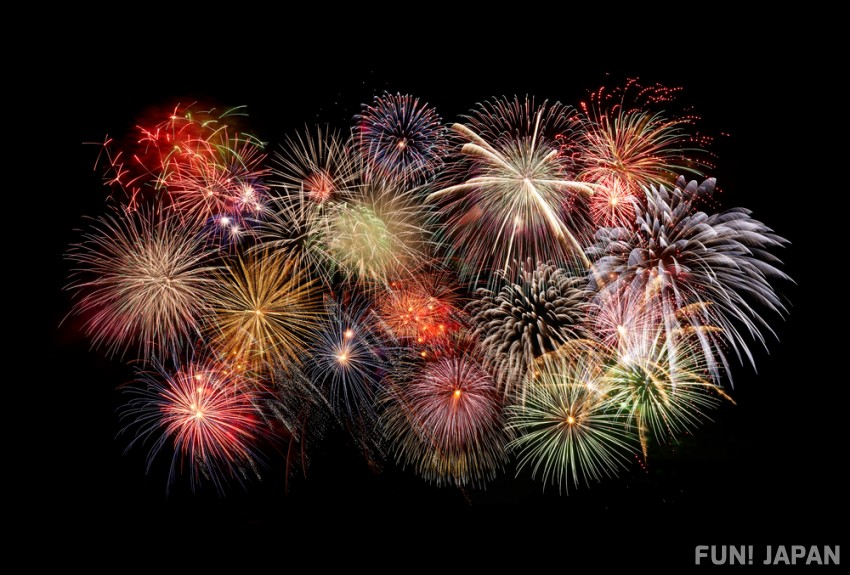
Hanwarimono are a combination of the spherical warimono style (above) and the split-shell pokamono style (below), with ‘han’ meaning half. Offering the best of both worlds, these often combine a variety of colors. The most popular kind is the senrin (thousand-wheel) which features a group of smaller often brightly-colored explosions creating a patchwork of patterns.
Pokamono (ポカ物)

Pokamono are a slightly more chaotic firework as their shells split in two, scattering the contents across the sky. Popular kinds include the Bee (hachi) kind which spin and swarm in the sky like bees around a nest, as well as a king of willow (yanagi) variety.
Katamono (型物)
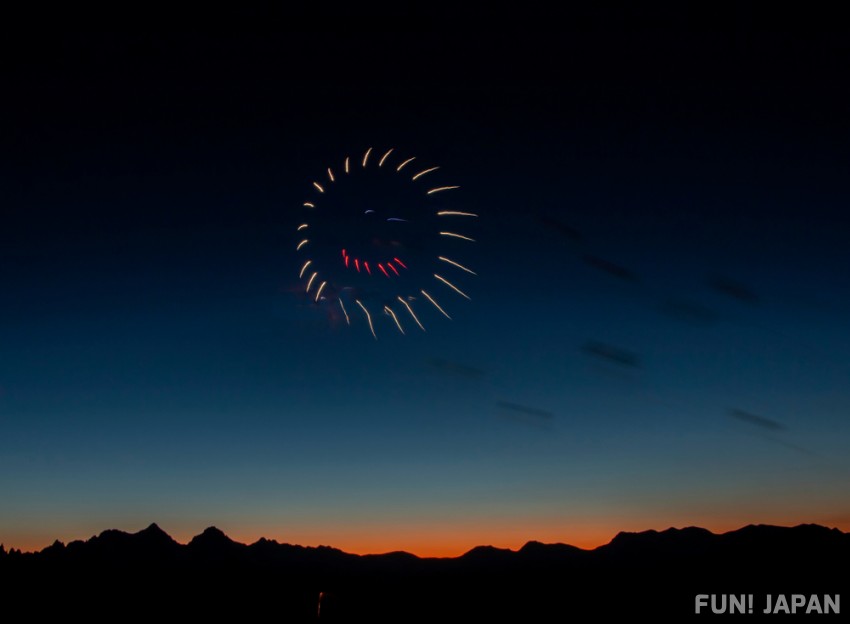
The most popular with children, katamono fireworks explode in carefully designed patterns of smiling faces, children’s characters, animals and even poke-balls. A playful design, they are impressive in their accuracy.
Bonus type: Senko Hanabi
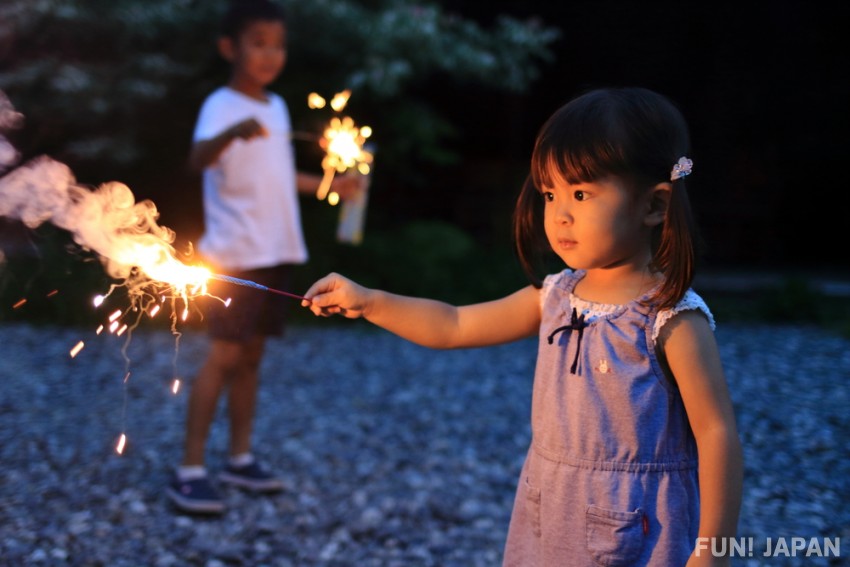
Senko Hanabi are Japanese sparklers that can be held as they spark and glitter. Popular with children, they are known across the world and are used to write or draw in the air. In Japan, they are a way to highlight the transient nature of life due to their short-lived illumination.
Where you can see Japanese Fireworks
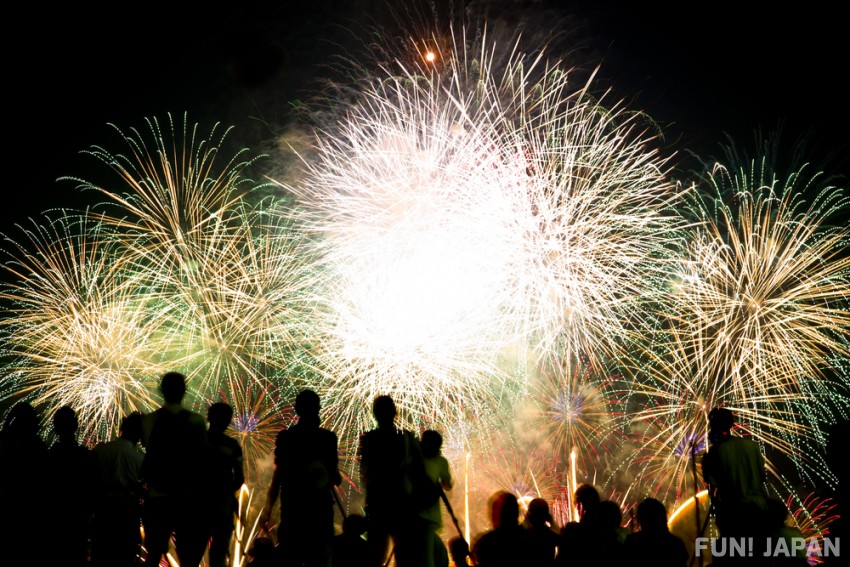
The easiest way to see fireworks in Japan is at summer festivals. Generally held between June and September, fireworks are a huge part of the summer experience in Japan. Locals and visitors will gather in their thousands to line riverbanks and beaches for evening viewings, often dressing in yukata and enjoying the food stalls (yatai) and fun festival atmosphere.
Unlike many countries, Japan does not use fireworks to celebrate the arrival of the new year. Instead, Japan has a quieter approach with shrine and temple visits made with family and friends in the early hours of the morning.
The Best Firework Festivals in Japan
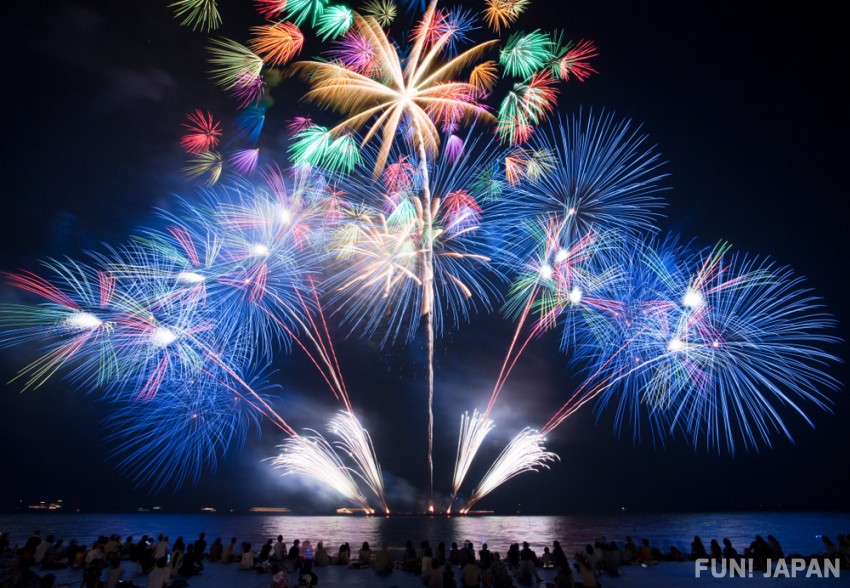
There are two kinds of firework displays in Japan: one combined pyrotechnic display and the competition type. The latter is popular as different pyrotechnicians will compete to show off the latest designs and creations. These are some of the biggest festivals in Japan:
Sumidagawa Fireworks Festival (隅田川花火大会)
This is the most popular firework festival in Japan, drawing crowds of up to a million lining the riverside and surrounding streets. As the origin of public fireworks displays, it is a unique experience to see and viewing spots are staked out days in advance. It is held on the last Sunday of July.
Tsuchiura All Japan Fireworks Competition (土浦全国花火競技大会)
One of the largest hanabi taikai in the country, this is an incredible evening of displays from the world’s top pyrotechnicians. It is held in Ibaraki prefecture in October - a little later than most summer festivals - but is popular nonetheless. The displays last almost 2.5 hours and visitors travel from across Japan to enjoy the show.
Omagari All Japan Fireworks Competition (大曲全国花火競技大会)
Another huge fireworks competition, Omagari is held in Akita prefecture in late August, drawing crowds of up to 750,000. Designers from across the country compete with their best creations and music pairings, forming a breathtaking show that lasts almost two hours.
Kumano Fireworks Festival (熊野大花火大会)
Held on the beach of rural prefecture Mie, the Kumano fireworks festival has been held on August 17th for the past 300 years. It is especially well known for the display’s impressive reflections in the water, and also has a competitive element.
Miyajima Water Fireworks Festival (宮島水中花火大会)
Framing the famous floating torii-gate of Miyajima, this mid-August firework display is one of the most stunning in Japan. Held in the bay of the small island, it features around 5,000 shells with some launched from the water. Visitors can see the display from the shore of Miyajima as well as the mainland in Hatsukaichi City, as well as from special sightseeing boats in the bay.
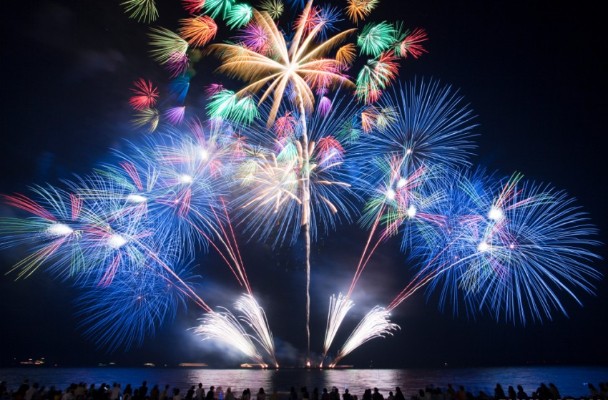
Comments